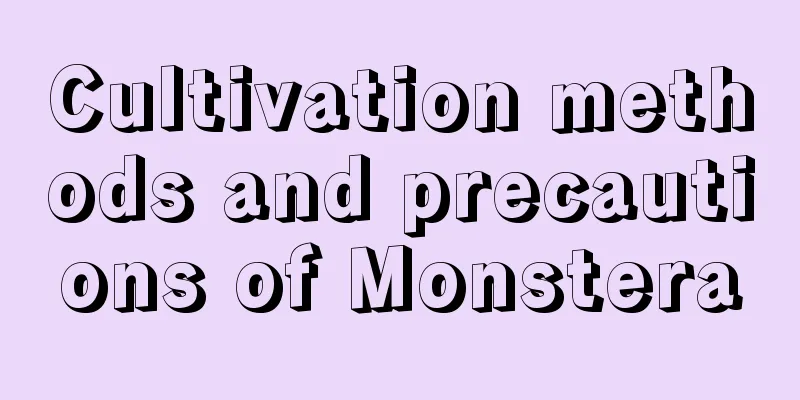Lily planting techniques and cultivation methods

|
Lily is an important ornamental flower, suitable for garden planting, potted plants or cut flowers. The bulbs of some varieties of lily can be used as medicine, and the bulbs of some varieties of lily are also edible and are often used in cooking or making desserts. Let’s learn about the planting techniques and cultivation methods of lilies. 1. Planting techniques 1. Soil selection Lilies prefer loose, fertile and well-drained slightly acidic sandy loam with a pH value between 6.0 and 7.0. The following soil preparation options are available: Mix leaf mold, garden soil and river sand in a ratio of 3:2:1. Mix peat soil, perlite and vermiculite in a ratio of 4:2:1. Buying special lily nutrient soil is convenient and can provide comprehensive nutrition. The soil needs to be disinfected before planting, and it can be exposed to the sun or watered with fungicides . 2. Flowerpot selection Choose a flowerpot of appropriate size and material according to the number and size of bulbs, and ensure that the flowerpot has good air permeability and drainage. 3. Planting points The planting depth of the bulbs is 2-3 times the diameter of the bulbs, about 6-8 cm, and the thickness of the covering soil is 3-5 cm. Keep the distance between bulbs at 15-20 cm to avoid competition for nutrients and affect ventilation between plants. The bottom of the bulb should be placed at a relative tilt of about 60 degrees, with the bud facing upwards. 2. Breeding methods 1. Lighting management Sufficient light is required during the growing period, ensuring 10-12 hours a day, and it can be placed in a sunny place. During the bud formation period, appropriate shading is required to avoid direct sunlight, and a shade net can be used for shade. After the flowers bloom, they need to be placed in a diffused light location to avoid direct sunlight and prolong the flowering period. In summer, shade measures should be taken to avoid leaf burns. 2. Watering management Keep the soil moderately moist during the growing season and avoid waterlogging. During the high temperatures in summer, water 1-2 times a day and pay attention to drainage. Water every 3-5 days in autumn to keep the soil slightly moist. Water every 7-10 days in winter to keep the soil slightly moist. 3. Fertilization method Apply nitrogen, phosphorus and potassium compound fertilizer once a month during the growing season. During the flowering period, apply potassium dihydrogen phosphate solution with a concentration of about 1:1000. When applying fertilizer, follow the principle of "apply small amounts of fertilizer frequently", loosen the soil before applying fertilizer, and water after applying fertilizer. 4. Bracket management In the early stage of bud formation, tie the plants to the support to prevent them from falling over. In addition, flower lovers also need to check the plants regularly and use fungicides to treat them in time if any abnormalities are found. Pay attention to ventilation and light transmission to reduce the chance of disease and pests. After planting the lilies, place them in a low temperature environment of 9-13 degrees Celsius for about a month, avoiding temperatures exceeding 15 degrees Celsius. Through the above methods, the healthy growth and flowering of lilies can be effectively promoted, making them more ornamental.
|
<<: Bullfrog breeding technology and management
>>: Carp breeding technology and fish pond management
Recommend
It takes several years for pomegranates to bloom and bear fruit (pomegranate tree planting and management techniques)
Generally, young pomegranate trees will bear frui...
Cultivation methods and precautions of alpine banyan
1. Maintenance methods 1. Temperature: Mountain b...
Causes and treatments of yellow leaves of Cleome
1. Water appropriately Reason: The plant Cleome i...
The benefits of eating onions, and what should not be eaten with onions
1. Benefits of eating onions Reduce the risk of c...
How many times a year should apple trees be fertilized?
1. Fertilization frequency 1. Apply fertilizer be...
Can Pink Dragon Rose be potted?
Can Pink Dragon Rose be potted? Pink dragon rose ...
Where is the best place to plant pomelo?
Pomelo planting area Pomelo generally grows in wa...
How to grow white pine
1. Suitable lighting White pine can be placed in ...
How to make brown rice germinate quickly
Brown rice germination environment Brown rice pre...
When is the best time to plant ginkgo trees?
Before planting ginkgo trees, you first need to c...
Can date palm seeds be planted?
Can date palm seeds be planted? Date palm seeds c...
How much is the yield of sugarcane per mu?
Sugarcane yield per mu Under normal circumstances...
Epiphyllum cultivation methods and precautions
Epiphyllum belongs to the Cactaceae family and is...
Breeding methods and precautions of golden hanging butterfly
The golden hanging butterfly is very easy to rais...
When is the best time to repot bougainvillea?
Bougainvillea is a common ornamental plant, loved...









